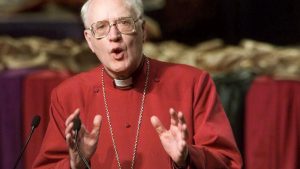The Timeless Celebration of Valentine’s Day: Unveiling Its Rich History
1. The Modern Face of Valentine’s Day
Valentine’s Day, as we know it today, is a vibrant celebration of love, often marked by exchanging chocolates, flowers, and heartfelt cards. However, beneath its cheerful surface lies a complex and intriguing history. This day of affection is deeply rooted in ancient traditions and has evolved significantly over the centuries, shaped by various cultural influences.
2. The Roman Festival of Lupercalia
The origins of Valentine’s Day are often linked to Lupercalia, an ancient Roman festival held in mid-February. This festival, characterized by rituals promoting fertility and purification, involved practices that were far removed from the romantic notions we associate with Valentine’s Day today. Historians like Noel Lenski highlight the connection between Lupercalia’s themes and the evolution of Valentine’s Day, suggesting that early Christian leaders sought to transform these pagan rituals into a celebration of martyrdom and devotion.
3. The Myth of St. Valentine
Central to the legend of Valentine’s Day is the figure of St. Valentine, a name attached to several martyrs in Christian history. One prominent tale tells of a priest defying Emperor Claudius II by marrying couples in secret, while another narrative involves a bishop performing miraculous healings. Despite these stories, historical records remain ambiguous, leaving many questions unanswered about the true identity and deeds of St. Valentine. The Catholic Church’s decision in 1969 to downplay his role highlights the murky origins surrounding this figure.
4. The Cultural Evolution of Love and Literature
The transition from Lupercalia to a day of love was significantly influenced by literary figures. Geoffrey Chaucer, in his poetry, linked the feast day of a different St. Valentine to themes of courtly love, inspiring later writers like Shakespeare to follow suit. This literary evolution bridged the gap between ancient rituals and modern expressions of love, transforming Valentine’s Day into a celebration we recognize today.
5. The Advent of Commercialization
As Valentine’s Day spread through England and the United States, it became increasingly commercialized. The introduction of mass-produced cards, symbolic gifts like heart-shaped chocolates, and floral arrangements transformed it into a major commercial event. Despite criticism of its commercialization, the holiday has persisted, fulfilling a deep human need for connection and joy during the colder months.
6. Reflections on Love and Celebration
Historians like Henry Kelly and Elizabeth White Nelson acknowledge the holiday’s enduring appeal, despite its complex origins. Valentine’s Day, with its blend of ancient rituals and modern sentiments, serves as a testament to the power of love and celebration. It stands as a vibrant reminder that, even in the coldest of winters, there is warmth to be found in shared joy and love.
This narrative unfolds the multifaceted history of Valentine’s Day, revealing a tapestry woven from ancient traditions, literary influences, and cultural evolution, all converging to create a celebration that transcends its origins.














